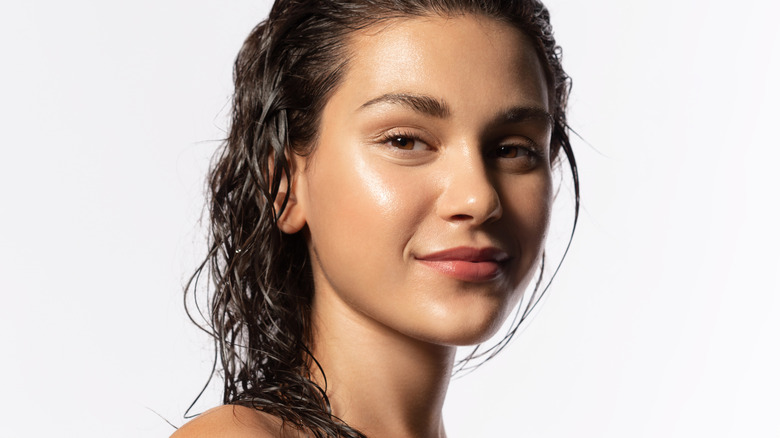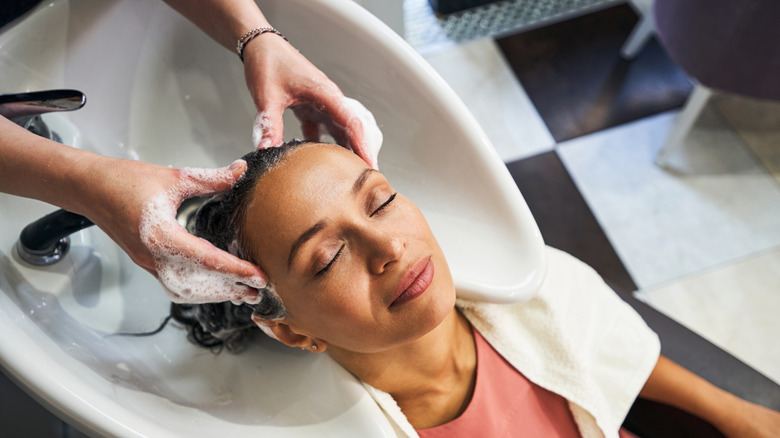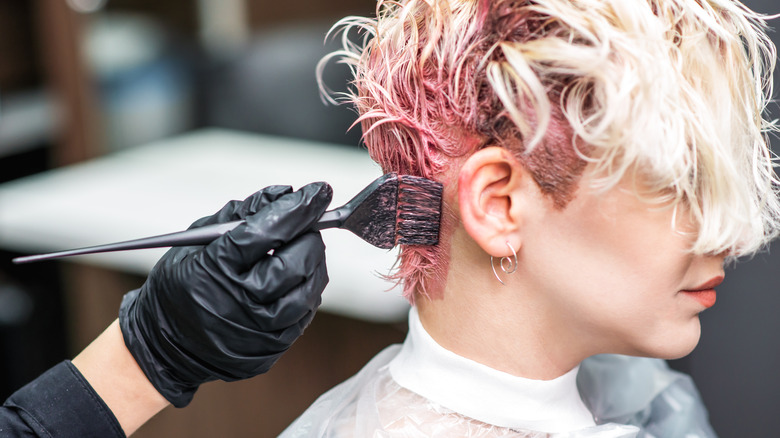Can You Dye Your Hair When It's Wet?
For those looking for a quick hair color refresh or change, you're probably more than familiar with the process of dyeing it at home. While at-home dyes aren't as ideal as going into the salon, they are a quicker and more affordable alternative. Part of the reason why at-home hair dyes are so popular is that they generally cost a small fraction of the cost of going to the salon. Fash explains that, on average, a hair coloring job will set you back between $60 and $150. This range depends on the extent of the hair coloring and the salon you go to. If all you need is a quick refresh of your existing hair color, an at-home hair dye box might be better for you.
However, for those who have gone through the process of dyeing your own hair, you've probably noticed that most of the instructions call for your hair being wet. While normal for at-home, this isn't the usual process when you head to the salon. Typically, hairdressers start adding hair dye before washing your hair. This begs the question of whether at-home hair dyes are safe and worth the hassle. If professionals use dry hair, how productive could it be to dye your hair while it's still wet?
Is it possible to dye wet hair?
As counter-productive as it may sound in comparison to the hair salon process, dyeing your hair while wet is still possible. According to L'Oréal Paris, the technique of dyeing wet hair is often used when you want a subtle color. Dyeing wet hair is one way those with thick hair can get an even coloring. Since hair is most vulnerable when it's wet, the hair dye can penetrate the hair shaft easily when it is wet.
All About the Gloss adds that not only does the hair dye absorb more when it is wet but it can also help prevent a mess. Instead of making a mess in your sink when you dye it at home, dyeing your hair in the shower will automatically clean up all those excess splashes. What's more, dyeing wet hair lets you distribute some of that hair dye more evenly than with dry hair. When painting over spots with dry hair, it's very easy to mess up sections when they all clump together. With wet hair, the hair dye will mix easier, and you won't need to worry about missing any hair along the way.
Drawbacks to dyeing wet hair
While it would be nice to shower and dye your hair at the same time, it's not always recommended by professionals. BelleTag warns that dyeing your wet hair will ultimately lead to more damage than dry hair. When your hair is wet and vulnerable, too much hair dye can overwhelm your hair shaft and damage it further. When your hair is dry, the natural oils give a bit more protection against this damage. For this same reason, if parts of your hair absorb the dye differently than others, you can be left with an uneven hair application once it has dried. This could leave you with random patches in different colors, far from the ideal hair color you probably wanted.
Fixing Beauties adds that dyeing wet hair could lead to a less vibrant color than what you expected. The color will ultimately be more subtle than planned, since water will naturally dilute some of the hair dye, giving you a muted tone. While this might be ideal for some, if you were expecting a vibrant shade, this could present a problem. Water might completely dilute the hair color to the point where it might even fade away before the hair has a chance to absorb the dye.


